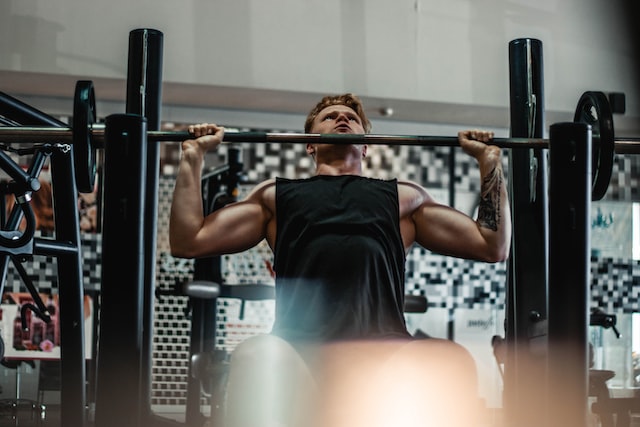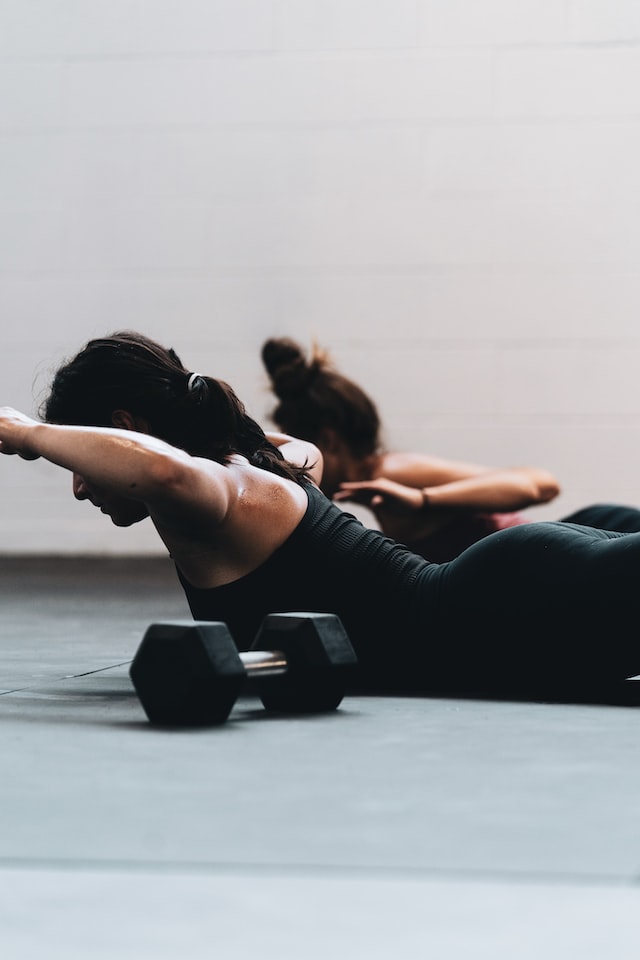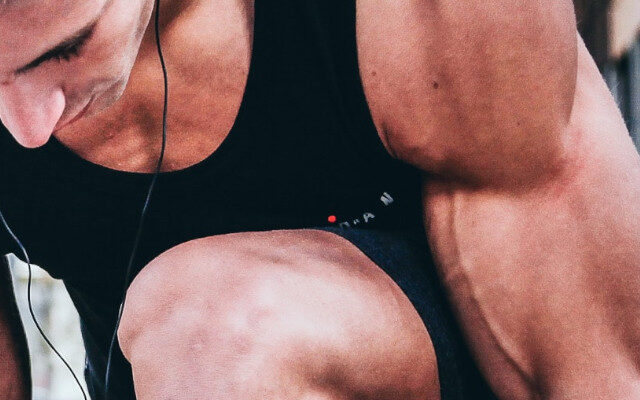This is a two-part series about shoulder muscle development. If you have already read part I, you can jump over to part II by CLICKING HERE.
Three-dimensional, capped-like shoulders help form a V-shaped appearance for your upper body, making you appear leaner, more attractive, and more athletic. It also helps your arms look significantly more muscular when you have pronounced shoulders that appear to separate from the rest of the muscles in your arm.
Unfortunately, many guys make the same common mistakes that prevent them from adding mass to their shoulders. So, for today’s post, I want to go over eight of the most common mistakes that are holding you back in terms of bulking up those shoulders.
Mistake One: Not Training Through a Full Range of Motion

First and foremost, most people don’t train through a full range of motion, especially when doing exercises like overhead presses. If you’re someone that actually does go all the way down next time you go to the gym, take a look at how most people perform their barbell, dumbbell, and machine overhead presses. You’ll see that most people don’t lower the weight further than the point where their upper arms are parallel to the floor before pressing the weight back up.
What you want to do instead is lower the weight all the way down until your hands are at least at ear level and you can go even lower until the dumbbells are about the same height as your shoulders. This is beneficial because it’s specifically the lower part of the exercise that stimulates the delts the most. The upper part, on the other hand, is largely a function of the triceps.
If we divide the motion of an overhead press into a lower, middle, and the upper portion we can see that the triceps are heavily involved in locking out the weight during that upper portion, not so much your shoulders. Your shoulders fire fully in the lower and middle portions of the exercise.
On top of the fact that your shoulders are more active in the lower and middle section, research also indicates that in general training through a greater range of motion is better for muscle growth.
For example, studies show that full squats cause more glute and adductor growth than partial squats and a full range of motion curls produce more bicep growth when compared to partial curls.
Mistake Two: Focusing on the Front Delts While Neglecting the Side and Rear Delts
Another common mistake is that you’re focusing too much on the front delts but not enough on the side and rear delts. This is usually done unintentionally and this issue can even affect advanced bodybuilders.
Performing a disproportionate amount of volume for your front delts is common for two reasons. First, one of the staple shoulder exercises in everyone’s routine is the overhead press. Unfortunately, the overhead press as great of an exercise as it is focuses primarily on the front delts. Meanwhile, the side and especially the rear delts get much less activation.

The second, and also the bigger issue is the fact that you already train your front delts quite a bit during all your horizontal pressing exercises like the dumbbell and barbell bench press. So, when you train your chest you inadvertently also train the front part of your shoulders a lot.
Even your rear delts will get recruited to a decent extent as you perform different pulling exercises, like pull-ups, rows, and especially Bent over high rows. But that’s not the case for the side delts, which are especially important for giving your shoulders that wide look.
Really try to hit those side delts…
With the exception of upright rows which can actually lead to shoulder impingement, your side delts are not activated to a very significant extent from most other compound exercises, including the bench press, pull-ups, and rows. That’s why you want to put extra emphasis on training your side delts during your shoulder workouts.
There are pretty much no lifters that need to do isolation exercises for their front delts, like dumbbell frontal raises, for example. However, pretty much every lifter can benefit by adding more side and rear delt exercises, such as dumbbell lateral raises and cable reverse flies.

Now on top of the aesthetic benefits, focusing on the side and rear delts is also beneficial from a posture and shoulder health perspective. A study published in the journal of clinical biomechanics found that strengthening the posterior head of the deltoid helps to ensure shoulder joint integrity and reduces the likelihood of a shoulder injury.
Mistake Three: Exercising Your Shoulders at the End of Your Workout
A lot of people place shoulder exercises at the end of their workouts. Many studies, including a randomized controlled trial, show that exercises and muscle groups that you train first in a workout are the ones that you’ll see the most gains from. However, a lot of people that are trying to grow their shoulders don’t train their shoulders first.
If your split training routine combines chest shoulders and triceps, for example, into one push workout, you’re most likely starting your workout with exercises like bench presses and dumbbell presses. This means you’ll exhaust your shoulders quite a bit before you finally get to your shoulder exercises. That works just fine if your primary goal is to grow your chest, but if you primarily want to grow your shoulders, it would be much better to hit them at the beginning of your workout.

This is why I like to combine shoulders, biceps, and triceps into one arm workout on a separate day from my chest and back workout. Having an arm-specific day where you can start fresh with shoulder exercises that target your mid and rear deltoids, like bent arm lateral raises and dumbbell reverse flies, can wind up being extremely beneficial for balancing out the shape of your shoulders.
Even if you start the workout with overhead presses, which target more of your front delts, starting off with shoulder exercises can help you lift significantly more weight than if you were to finish with shoulder exercises. That, in turn, will benefit muscle growth.
Mistake Four: Working Your Traps Instead of Your Delts
Another major mistake is allowing your traps to take over for your delts. This definitely isn’t the case for everyone, but some people feel shoulder exercises, especially side delt exercises, more in their traps than they do on their shoulders. Due to this increased level of trap activation, their traps grow like crazy while their shoulders get left behind.
This can be a tricky situation because it’s impossible to stimulate your delts without also having your traps involved in the movement. The good news is that there are a couple of things you can do to reduce trap recruitment.
First, you can static stretch your traps before you do your shoulder workout. Stretching a muscle for 60 seconds or longer decreases subsequent muscle activation during exercise. You can effectively stretch your traps by simply bending one arm and putting it behind your back as you take your opposite hand and pull your head down to the side towards your shoulder. You’ll want to hold that position for 60 seconds on each side for one to two sets before training your shoulders.
Another great way to train your side delts while reducing trap involvement is to focus on pushing your dumbbells as far away to your sides as possible as you bring them up during a lateral raise rather than just focusing on lifting them straight up.
A Parting Thought From DigEnet
That brings us to the end of part I in this two-part series about building bigger and better shoulders. This is a lot of information for our brains to process, and that’s why we thought it best to break this up into two smaller (and more easily digestible) posts. If you are ready, you can CLICK HERE to dive into part II. We thank you for taking the time to learn more about building a healthier you and are grateful that you have made us a part of your journey!
